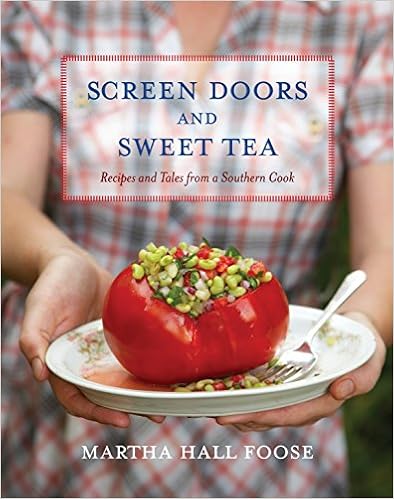
There are few dining experiences worse than the full-on tourist trap, so learn how to avoid them with their overpriced drinks, uninspired food, and cloying or incompetent service. Never again begrudgingly suck down the last drops of a weak, syrupy cocktail and pay the bill as you think, “Man, I could have had this terrible meal at home and for sooo much less.”
Any destination has them, although some places are more loaded than others. Often positioned in busy neighborhoods, cleverly disguised with staff expertly trained in the art of skullduggery, awaiting hoards of unsuspecting and obvious-looking tourists to fork over their hard-earned travel budget for a less-than-excellent meal.
It’s certainly not to say all touristy restaurants are bad, as with Café du Monde in New Orleans or Katz’s in New York, where the lines out the door are for good reason. But as many of us travel with eating well in mind, how do we get the most out of those travel pennies, and avoid the bad tourist trap restaurants in unfamiliar places? Here are a few tips and tricks we’ve picked up along the way.

Katz’s Deli
Ask a Local—but Be Specific
We’ve all seen Rachael Ray or Rick Steves bumble their way through awkwardly asking about the best spot for lunch or a cocktail, and asking a local taxi driver or human on the street is certainly a good (and perhaps obvious) option, but can also backfire.
Depending on where you are, locals might truly assume you want to go where the tourists go and send you there. Some countries, like Cuba for instance, don’t have a bustling local restaurant culture, so a high percentage of the traditional restaurants are geared towards tourists. It’s happened to me on several occasions and I, at no fault of the person I’d asked, ended up exactly in a place I was trying to avoid.
Foodie Top 100 Restaurants Worldwide, $8 on Amazon
When trying to find good food, reading is fundamental!
Don’t be afraid to ask what their favorite spot to eat, drink, or go dancing is. Be prepared, they may not want to tell you, thus blowing a well-kept secret, but it’s always worth asking. And depending on what you’re looking for, be discerning about who you ask. If you’re looking for a fun and lively bar or cheap eats, for instance, consider asking a younger person, more likely to frequent them.
Utilize Hotel Concierge—but Cautiously

W Boston
At a quality hotel, especially one known for their concierge like the W Boston, you can be pretty sure they’re not going to lead you astray, but certain lower-end hotels and even home-share operations (especially in highly-trafficked tourist destinations) have agreements with local establishments, and get kickbacks for reservations or business they secure on behalf of guests.
If the concierge or host has a locked and loaded answer and seems overly eager to drive you to a certain place, make your reservation, or even walk you to the front door, consider it a bad sign. Conversely, if they talk it out with you, asking thoughtful follow-up questions to refine the request, and suggest a few different spots, it’s more likely they only have your interest at heart.
Paige, one of W Boston’s Insiders, explains how she and her concierge team “strive to introduce not just the cliché Boston that people expect when they do a quick [online] search, but the thriving local scene underneath. It is a general rule of thumb to introduce guests to spots around the city they would only find here, and I only ever send W guests to places that I’ve personally experienced.”
Stay in a Home Share or Vacation Rental (with Good Hosts)

The Plum Guide
This is one of the single best ways to cut through the clutter and find great local bars and eateries. Vacation home rental sites like Airbnb and VRBO are well known and let you communicate with hosts/ask questions, but more recently specialty platforms like the Plum Guide have taken things to a new level. This London-based luxury vacation rental site not only vets its listings to make sure they’re in neighborhoods with good options, but also vets the hosts themselves to ensure they are engaging and available to offer suggestions.
Use Travel Apps—but Be Thorough
Discovery and review apps like TripAdvisor and Yelp are great ways to find, and potentially decide, on a place to eat with ratings, reviews, images, and other helpful info like pricing and accepted forms of payments. But a high star rating and loads of reviews doesn’t always guarantee it’s not a tourist trap.
Remember, reviews are being populated mostly by other tourists, especially on TripAdvisor, which isn’t a bad thing per se. If the food looks good and the reviews are positive, don’t be afraid to go where many have gone before, but remember that true local spots may not generate as many reviews as the places in high volume tourist areas. And though most of the platforms try to crack down with new authentication standards, some restaurants have found ways to game the system, generating fake and misleading reviews.

TripAdvisor
Find out what platform locals use most to rate and review restaurants (if anything at all). Yelp is limited in other countries but Google has become quite popular in places like Asia. And of course, there are often even more hyper-specific sites and apps in various regions, so do some research beforehand.
Use Your Senses
The good lord gave you 5 senses and deductive reasoning, so use em’. If you’re walking around and something smells good and is busy (especially with locals), you’ve probably come across something good. I like to think I’ve refined my senses over the years and here are a few things I look for to spot a local place, sight on seen.
- Pushy Door Staff Is a Red Flag: Not always the case, but if the host or hostess seems ravenous to get you to sit down, it should raise a red flag. A good local spot should be cool and confident, waiting for you to come to them.
- Avoid Chains: If it looks like a chain (glossy, overly-designed menus and overly-polished decor), and smells like a chain, it probably is a chain. Move on.
- Be Wary of Lines: It depends on what you’re looking for of course, but if there is a line around the block it may mean a fun or delicious experience awaits, though likely at a serious hit to your budget. Investigate the menu before sitting down.
- Look for Bigger Groups: Most people travel in smaller groups, so if you see big groups dining it might indicate a local hang where friends gather.
- Look for People Who Seem Comfortable and Familiar: Locals generally have an easy air about them as though they’ve been there before, while tourists will be studying the menu feverishly and looking around a lot.
- Empty Is Always a Bad Sign: This may seem obvious and doesn’t necessarily signify a tourist trap, but even if all signs pointed to a good place, if you show up and it’s empty during normal dining hours, you might want to ask yourself why.
All featured products are curated independently by our editors. When you buy something through our retail links, we may receive a commission. For more great hand-picked products, check out the Chowhound Shop.
from Food News – Chowhound https://ift.tt/2GTrbdJ
via IFTTT






































